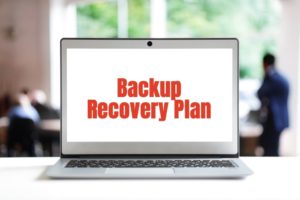Many computer users tend to resolve issues and glitches as they come. That works fine for some people and circumstances but for the more productivity-oriented environments such as businesses, there needs to be a plan to resolve issues as soon as they come. Otherwise, monetary loss looms. Businesses that heavily rely on computers should outsource the repair and maintenance of them to professionals — especially data preservation and restoration in the events of breakdowns. Disaster recovery typically involves restoring backed up data, but it also encompasses quick restoration of devices with the correct configuration so that business continuity is good with as little interruption as possible. Generally, the more time a computer or computer network is out of order, the more money that will be lost — as the old adage goes, “Time is money!” Some business managers and owners have a tendency to attempt to save money by outsourcing as little as possible to professionals. This can be an extremely stressful situation — businesses alone have caveats that can cause excessive stress, but to attempt to manage the repair, maintenance, and data backup on top of that can completely usurp the joy out of owning or operating a business, as well as risk unintentional damage to computer systems — unintentional damage can be caused by attempting repairs without sufficient knowledge — and that of consequences of the outcome. Disaster recovery in highly productive environments should be left to professionals and below there are a few points to keep in mind when starting or running a business that relies heavily on one or more computers.
Starting Up
Whether the business has been booming for a while or things are just getting started, keeping the office computer-repertoire as simple as possible is a cornerstone. Seeking purchasing decisions from well-informed IT professionals is recommended and will generally turn out based on the needs of the business. Purchasing appropriate hardware will make it easier to mitigate times of disaster such as when computers are stolen, fires break out, vandalism occurs, or computers breakdown. If a business has been going for a while, downgrading certain types of products could help disaster mitigation as well as save money, but these types of decisions should also be backed by educated personnel.
Smart Hiring Decisions
A search for quality professionals can be started on the internet. Criteria to measure the quality of a service provider might include the number of years in business, whether professionals are certified, reviews, and affordability. Quality criteria are not limited to what’s listed here, but they’re a good place to start. Disaster recovery is a critical type of service that should not be downplayed whereby cheap and easy service is retained by the business in need of it. Professional services that are cheap and relatively easy to retain might be better suited for quick-fixes, but not for disaster recovery — it’s a branch of IT that needs to be properly planned and not applied only when something bad happens — without a sound recovery plan, a business will eventually be “dead in the water.”
Testing It Out
Once a disaster recovery plan has been implemented, it should be monitored closely to see what should go and what should stay. Working closely with a disaster recovery service is key while carrying out day-to-day operations — anything unusual or not functioning as intended should be reported as soon as possible unless it’s monitored remotely by the disaster recovery service. With knowledgeable IT professionals working behind the scene, the prognosis of disaster is good.
SystemsNet is a multifaceted IT service provider with years of experience and expertise on staff qualified to carry out disaster recovery. Please contact us.



